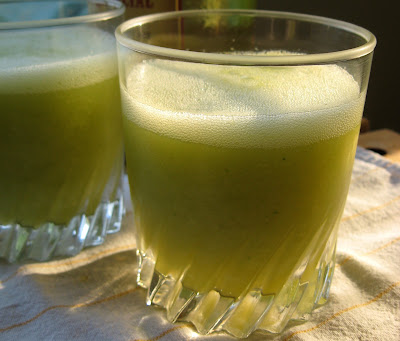Every few months--ever since I discovered Lyn Hejinian's book
My Life--I come back to the (prose) poems; and every time, something different catches my eye. Although upon first reading the book, I thought the poems too oblique and impersonal, over time I've learned to follow the associative leaps Hejinian makes. And beneath the veneer of opacity, the poems are personal and sincere, and yet not undemanding of the reader. It's a longer poem, but I thought I'd share it with you nonetheless. I encourage you to read it more than once--and I hope that you can enjoy it. (Oh, and the "line breaks" are in actuality how the lines fit on the book's small pages--I thought I'd replicate the experience for you.)
One begins as a Back and backward, why,
student but wide and wider. Such that
becomes a friend art is inseparable from the
of clouds search for reality. The con-
tinent is greater than the
content. A river nets the
peninsula. The garden
rooster goes through the
goldenrod. I watched a robin worming its way on
the ridge, time on the uneven light ledge. There as
in that's their truck there. Where it rested in the
weather there it rusted. As one would say, my
friends, meaning no possession, and don't harm
my trees. Marigolds, nasturtiums, snapdragons,
sweet William, forget-me-nots, replaced by chard,
tomatoes, lettuce, garlic, peas, beans, carrots, rad-
ishes--but marigolds. The hum hurts. Still, I felt
intuitively that this which was incomprehensible
was expectant, increasing, was good. The greatest
thrill was to be the one to "tell." All rivers' left banks
remind me of Paris, not to see or sit upon but to
hear spoken of. Cheese makes one thirsty but on-
ions make a worse thirst. The Spanish make a little
question frame. In the case, propped on a stand so
as to beckon, was the hairy finger of St. Cecilia, cov-
ered with rings. The old dress is worn out, torn up,
dumped. Erasures could not serve better authen-
ticity. The years pass, years in which, I take it, events
were not lacking. There are more colors in the great
rose window of Chartres than in the rose. Beside a
body, not a piece, of water. Serpentine is fool's jade.
It is on a dressed stone. The previousness of plants
in prior color--no dream can come up to the origi-
nal, which in the common daylight is voluminous.
Yet he insisted that his life had been full of happy
chance, that he was luck's child. As a matter of fact,
quite the obverse. After a 9-to-5 job he got to just go
home. Do you have a compulsion to work and then
did you have a good time. Now it is one o'clock on
the dot, but that is only coincidence and it has a
bad name. Patriots drive larger cars. At the time
the perpetual Latin of love kept things hidden. We
might be late to the movies but
always early for the
kids. The women at the parents' meeting must wear
rings, for continuity. More sheep than sleep. Paull
was telling me a plot which involved time travel, I
asked, "How do they go into the future?" and he
answered, "What do you mean?--they wait and the
future comes to them--of course!" so the problem
was going into the past. I think my interests are
much broader than those of people who have been
saying the same thing for eight years, or so he said.
Has the baby enough teeth for an apple. Juggle,
jungle, chuckle. The hummingbird, for all we know,
may be singing all day long. We had been in France
where every word really was a bird, a thing singing.
I laugh as if my pots were clean. The apple in the
pie is the pie. An extremely pleasant and often comic
satisfaction comes from conjunction, the fit, say, of
comprehension in a reader's mind to content in a
writer's work. But not bitter.




































